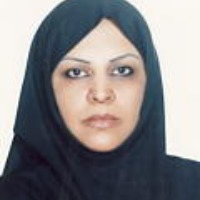Evaluation of Public Participation in Tarhhaye Manzar Shahri (Urban Landscape Plans)
Author(s):
Abstract:
Renovation of Urban deteriorated fabrics and the need for active public participation in the process of providing plans and implementations are among the most important topics in urban studies. Urban regeneration is a planned demolition for the purposes of reducing physical blight، social disorders and improving the overall quality of life in cities. Thus the design solutions could be more thoughtful، elaborate and with careful analysis of all relevant variables، various courses of actions، possible impacts، and eventually with less mistakes. Thus urban regeneration plans needs public and private involvements. Theoretical studies in public participations and their applications in experiencing urban renewal projects، conducted to the evolution of a new approach in «urban renewal» concepts that is «urban regeneration»، with the emphasis on revitalizing damaged fabrics by public participation. The application of public participation in urban renewal has been begun since 1385 in the country by preparation of Tarhe Manzare (Shari Urban Landscape Plans). One of the main objectives of these plans is to involve resident`s participation in the process of the renovation of deteriorated fabrics. In the format of «Special detailed renewal plans»، many of such plans are prepared and approved by Tehran renovation and renewal organization. One of the initial landscape plans is Atabak neighborhood in south east of Tehran. This paper investigates the status of participation in the urban landscape plans by studying the case study of Atabak neighborhood plan and tries to provide an appropriate process for participatory urban regeneration. To achieve the research objectives، different methods were used، such as content analysis of the description of the urban landscape plan contract، group interviews and field observations. In order to examine issues related to public participation in renovation of neighborhoods، meetings with residents and their representatives have been performed. Two main questions were raised in the interviews: satisfaction with the project، and the main problems facing the project. The interviewees were also encouraged to mention any other factor associated with their satisfaction (or dissatisfaction) of the area. The large amount of data was then reduced into smaller number of analytical units by applying coding and then pattern coding. The results show that the experience of community participation as an integral part of this project has not considered and performed well، and thus Atabak plan resulted in the fragmentation of traditional spatial context of neighborhood، defenseless and abandoned places and spaces، departure of local residents from neighborhood، and thus the public''s distrust on urban management. The evaluation and analysis of the Atabak project confirms that Manzar Shari plans lack appropriate process of public/private collaboration and thus they lead to problems in the process of implementation and the eventual failure of the product. The performed planning process has resulted in financial losses and various problems for the locale and the city as a whole. Based on the evaluation، the defects and shortcomings of the project، and reviewing current theoretical basis regarding urban regeneration، attempt has been made to propose the appropriate process for the participatory regeneration plans.
Keywords:
Language:
Persian
Published:
HOnar - ha - ye - ziba Memari - va - shahrsazi, Volume:17 Issue: 3, 2012
Pages:
29 to 40
https://magiran.com/p1136909
مقالات دیگری از این نویسنده (گان)
-
Analyzing the Influencing Factors in the Ranking of Iran’s Provinces: An Economic and Sustainable Competitiveness Approach
Hamidreza Bahmanpour Khalesi *, Goharrizi
Journal of Program and Development Research, -
The Effects of Spatial Patterns of Urban Green Structure on the Thermal Changes of Urban Heat Islands: The Case Study of Tehran
Goharrizi *, Sohail Gheshlaghpour
Journal of Environmental Studies,


